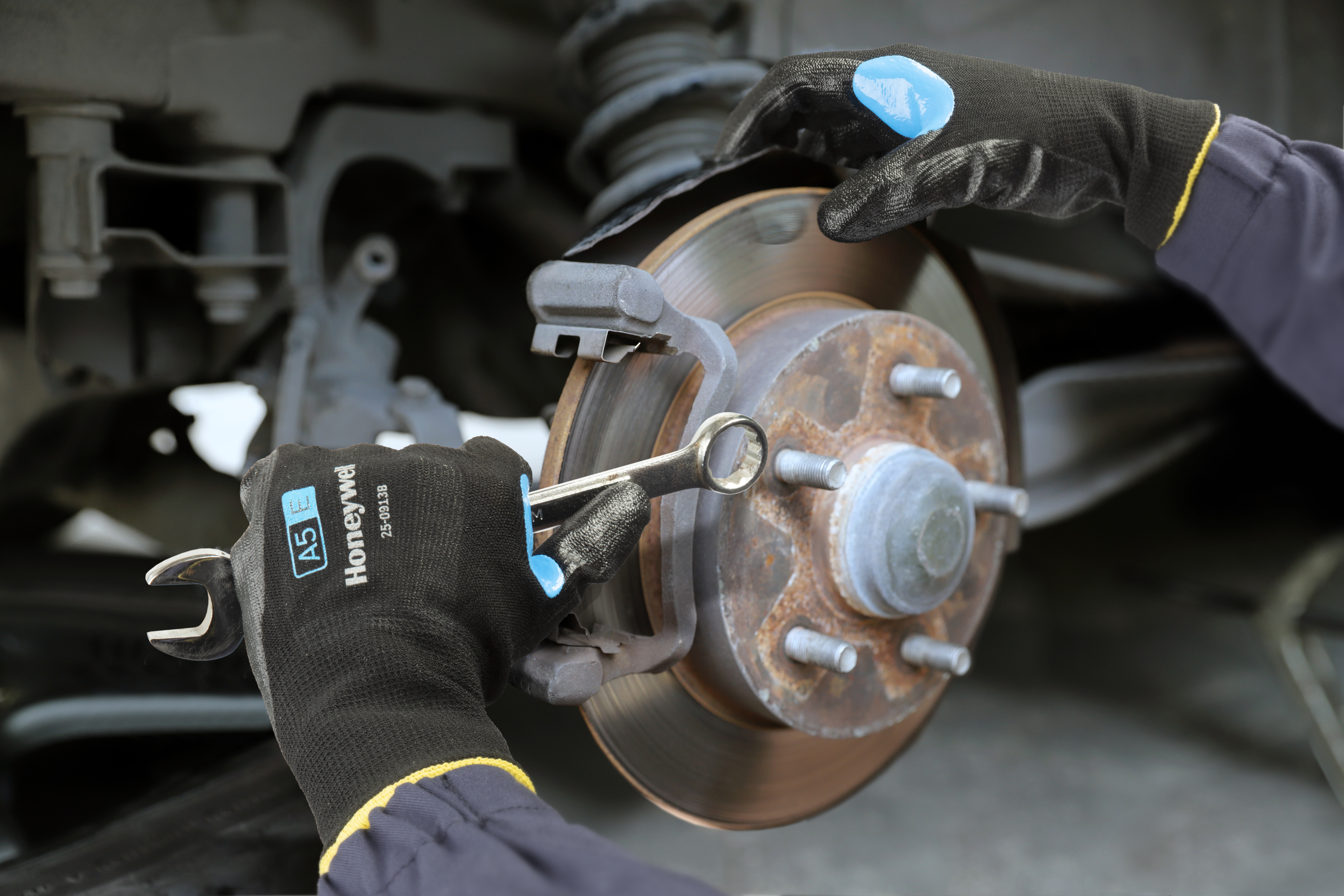HONEYWELL CORESHIELD™ - HOW TO CHOOSE THE RIGHT CUT RESISTANT GLOVE FOR YOUR JOB
“How can I make my gloves last longer and reduce glove costs?” A question that safety managers ask themselves regularly. .
Glove costs vary with the material, its thickness, the glove style, and brand. And glove longevity depends on the work being done, but also on the way safety gloves are being taken care of. Here is how to keep glove costs within budget and reduce the total cost of ownership for your top-quality gloves.
1. Choose gloves wisely .
A glove’s longevity depends on its durability. Features such as an adequate cut, tear, and abrasion resistance are intrinsically linked to hand safety, but also mean less frequent replacement, and therefore, lower cost per wear.
That’s why it’s important to look at the elements that provide glove strength.
High-abrasion resistance is a desirable attribute of a long-lasting glove. Under EN 388:2016, a typical test subjects the material of the gloves to abrasion by sandpaper under a determined amount of pressure. The protection level is indicated on a scale of 1 to 4 depending on the number of turns until a hole appears in the material. The higher the number, the better the resistance to abrasion.
Cut gloves, for instance, should be able to withstand pressure or damage from sharp metal. The abrasion cycles of Honeywell CoreShield™ are almost over 15,000. This is almost double the longevity required (abrasion level 4) by industry tests.
New coatings and manufacturing techniques increase glove durability, too. Strong knitting, engineered yarns, polymers and special treatments help gloves last longer. The CoreShield™ cut-protective range comes with a special coating which ensures that after 5 washing cycles, there are no significant changes in performance or size.
In addition, selecting a comfortable glove will ensure workers remain productive and don’t discard their gloves. The liner material influences wearer comfort, so opt for hypoallergenic and soft materials that absorb moisture.
A dark-colored glove will also enable the wearer to use it for a longer period, as gloves don’t look visibly dirty.

2. Wash gloves as per instructions .
Gloves are tricky to clean. The outside, as well as the inside, need to be cleaned and this should be performed according to manufacturer instructions.
Instructions for cleaning cut protection gloves:
3. Set up a glove laundering program .
Sometimes, soiled gloves are thrown away, when they could be cleaned and re-used. If gloves can be decontaminated and reused one or more times, the cost per cycle decreases. This cost depends on the purchase price; the number of times gloves can be re-used and the cost to decontaminate them. To be cost-effective, the decontamination process should cost less than replacing the gloves entirely. Whether you decide to go for an in-house program or externalize laundering to a professional PPE laundering service, this can also help you save money.
4. Store gloves properly .
Proper storage extends the service life of gloves. To keep gloves in top shape for as long as possible, don’t neglect safe and appropriate storage. In general, it is recommended that gloves be stored in their original packaging or a storage bag. Either way, they should be kept in a cool, dry place, away from strong UV rays and excessive temperatures. And away from chemicals.
To conclude, selecting high-quality hand protection PPE and taking good care of it will help you meet the demands of regulations and the needs of your workers. Giving gloves a longer life means protecting your investment.
Learn more about the Honeywell range here .
Watch Honeywell's CoreShield™ video here .


